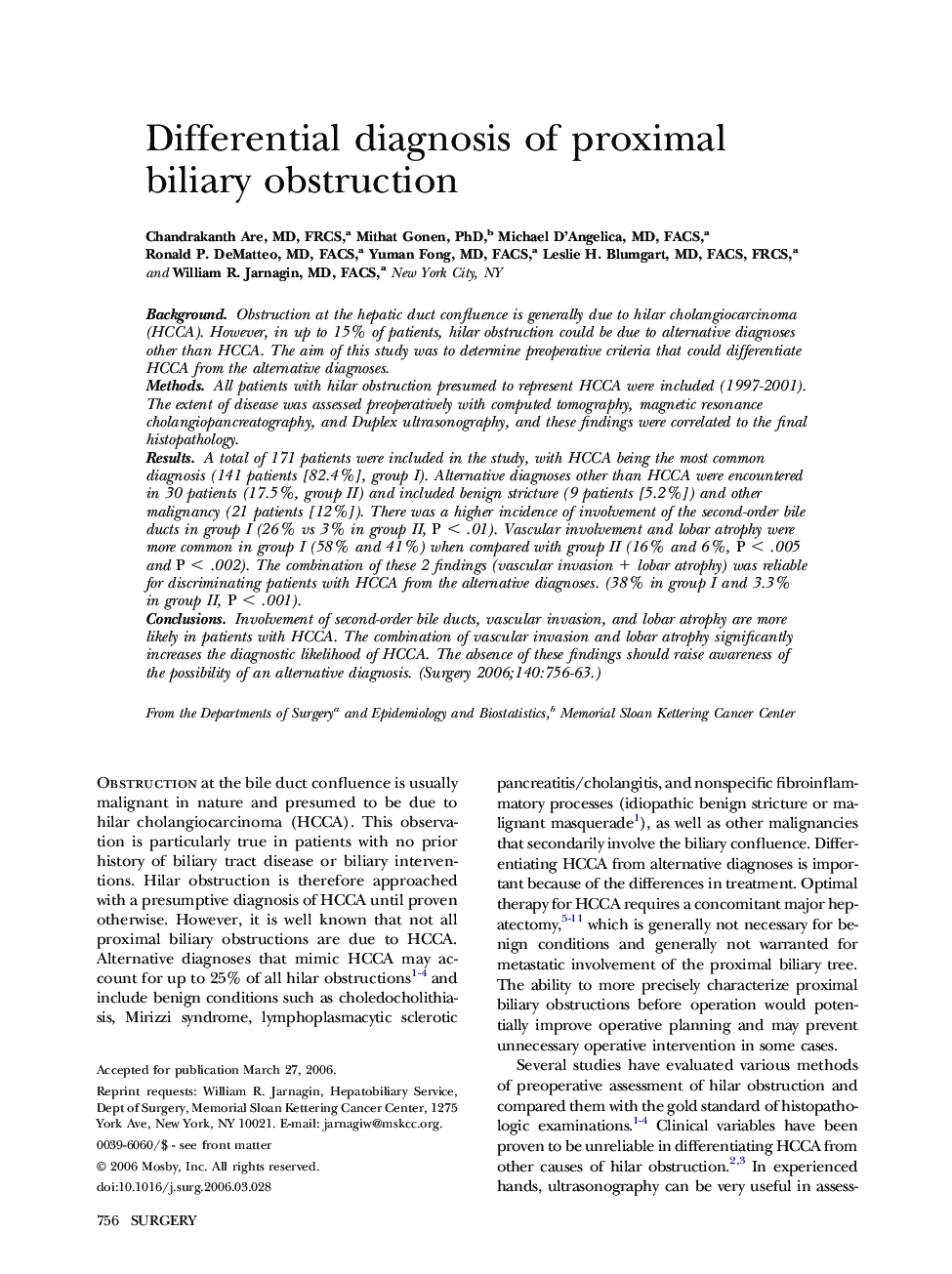| Article ID | Journal | Published Year | Pages | File Type |
|---|---|---|---|---|
| 4309887 | Surgery | 2006 | 8 Pages |
BackgroundObstruction at the hepatic duct confluence is generally due to hilar cholangiocarcinoma (HCCA). However, in up to 15% of patients, hilar obstruction could be due to alternative diagnoses other than HCCA. The aim of this study was to determine preoperative criteria that could differentiate HCCA from the alternative diagnoses.MethodsAll patients with hilar obstruction presumed to represent HCCA were included (1997-2001). The extent of disease was assessed preoperatively with computed tomography, magnetic resonance cholangiopancreatography, and Duplex ultrasonography, and these findings were correlated to the final histopathology.ResultsA total of 171 patients were included in the study, with HCCA being the most common diagnosis (141 patients [82.4%], group I). Alternative diagnoses other than HCCA were encountered in 30 patients (17.5%, group II) and included benign stricture (9 patients [5.2%]) and other malignancy (21 patients [12%]). There was a higher incidence of involvement of the second-order bile ducts in group I (26% vs 3% in group II, P < .01). Vascular involvement and lobar atrophy were more common in group I (58% and 41%) when compared with group II (16% and 6%, P < .005 and P < .002). The combination of these 2 findings (vascular invasion + lobar atrophy) was reliable for discriminating patients with HCCA from the alternative diagnoses. (38% in group I and 3.3% in group II, P < .001).ConclusionsInvolvement of second-order bile ducts, vascular invasion, and lobar atrophy are more likely in patients with HCCA. The combination of vascular invasion and lobar atrophy significantly increases the diagnostic likelihood of HCCA. The absence of these findings should raise awareness of the possibility of an alternative diagnosis.
